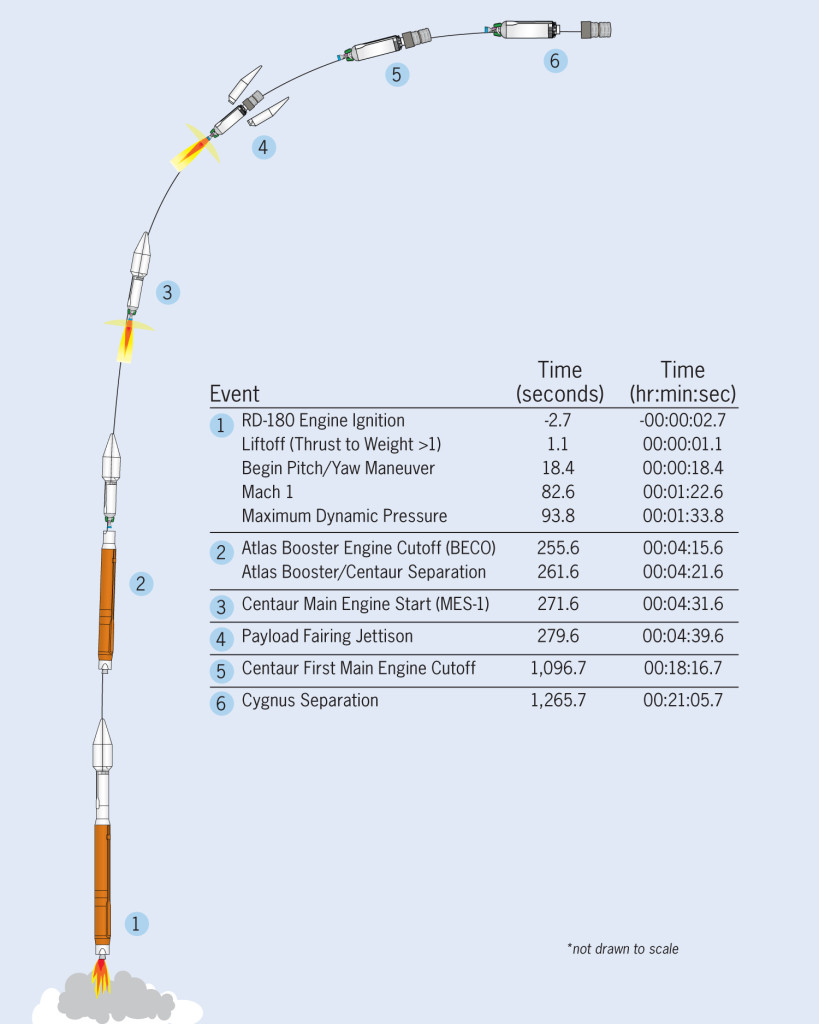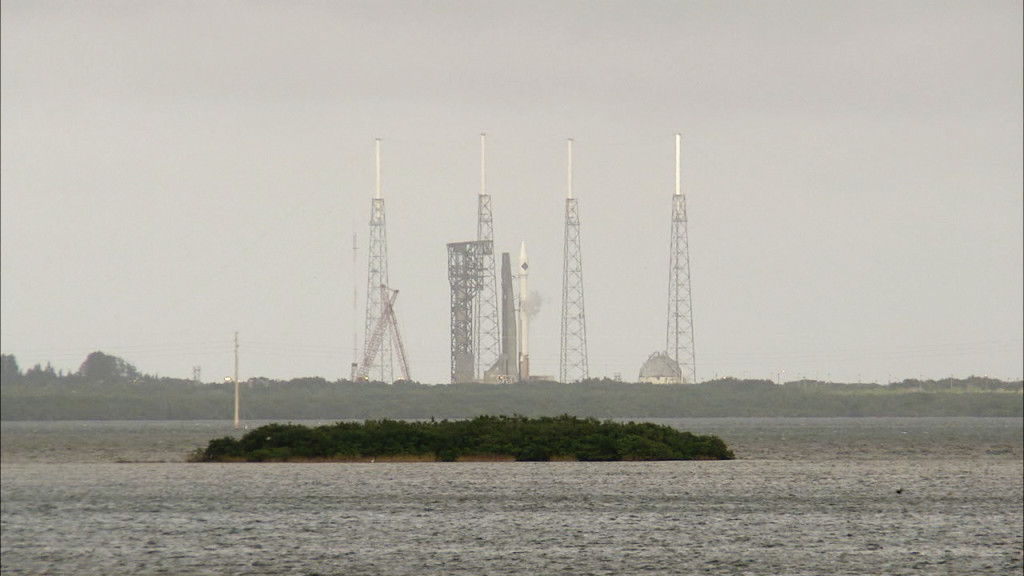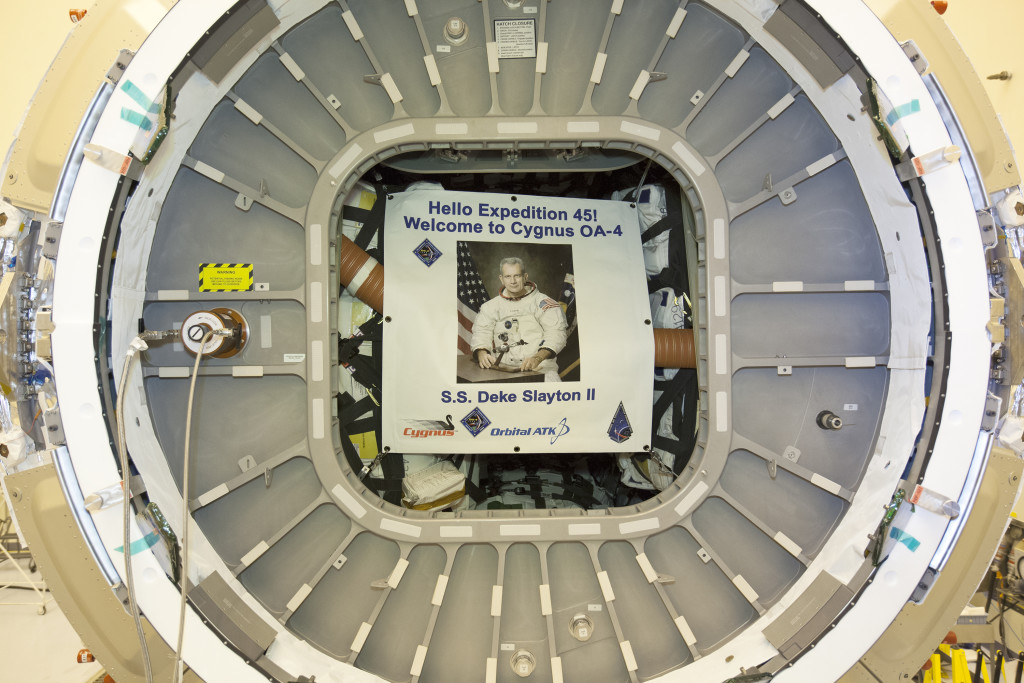If the Cygnus spacecraft lifts off on-time today, the six people living on the International Space Station will be able to watch it as the orbiting laboratory passes over Bermuda. The station is flying at 252 miles above Earth.
15 Minutes to Liftoff
We remain on schedule for launch at 4:44 p.m. EST.
Cygnus On Internal Power
Orbital ATK reports the Cygnus spacecraft is on internal power and is go for launch at 4:44 p.m.
A Look at Orbital ATK’s Fourth Cargo Resupply Mission
The enhanced Cygnus spacecraft being launched today carries 25 percent more mass than previous version. Here is a look at the upcoming flight.
Cygnus Transferring to Internal Power
The Orbital ATK Cygnus cargo spacecraft is switching to its on-board batteries for electrical power through the rest of the countdown. Once in space, Cygnus’ systems will be powered by a pair of twin, circular solar arrays.
Today’s Countdown Highlights
4:22 p.m. Cygnus begins transfer to internal power
4:29 p.m. Cygnus verified configured for launch
4:37 p.m. Status check to continue countdown
4:44:54 p.m. T-4 Minutes and counting
4:44:54 p.m. RD-180 engine ignition
4:44:57 p.m. Launch
4:45:15 p.m. Begin pitch/yaw/roll maneuver
4:46:19 p.m. Mach 1
4:46:30 p.m. Maximum Dynamic Pressure
4:49:12 p.m. Atlas booster engine cutoff (BECO)
4:49:18 p.m. Atlas booster/Centaur separation
4:49:28 p.m. Centaur first main engine start (MES1)
4:49:36 p.m. Payload Fairing jettison
5:03:13 p.m. Centaur first main engine cutoff (MECO1)
5:06:02 p.m. Cygnus spacecraft separation
~5:45 p.m. Cygnus solar array deploy
Launch Today Will Lead to Wednesday Berthing
Orbital ATK’s Cygnus spacecraft will move into the vicinity of the International Space Station on Wednesday with a launch today from Space Launch Complex-41 at Cape Canaveral Air Force Station. Astronaut Kjell Lindgren would use the station’s robotic arm to grapple the Cygnus, which carries a fixture designed to work with the arm, and then pull the uncrewed spacecraft toward the Unity module, also known as Node 1. The Cygnus will be connected to the Earth-facing port on Unity where astronauts will unpack its 7,380 pounds of equipment and supplies.
Countdown Enters Planned 30-Minute Hold
 Today’s countdown entered a planned hold at T-4 minutes. There are no technical issues in work and the weather remains green, with the forecast offering a 70 percent chance of acceptable conditions. Liftoff remains on schedule for 4:44 p.m. EST.
Today’s countdown entered a planned hold at T-4 minutes. There are no technical issues in work and the weather remains green, with the forecast offering a 70 percent chance of acceptable conditions. Liftoff remains on schedule for 4:44 p.m. EST.
No Technical Issues In Work
S.S. Deke Slayton II
Orbital ATK named the enhanced Cygnus spacecraft of this mission for Deke Slayton, one of NASA’s original seven astronauts and a champion of commercial space endeavors later in his career. Slayton, an Air Force test pilot before being selected for NASA, flew into space in 1975 as a member of the Apollo-Soyuz Test Project that saw an Apollo spacecraft and Soviet Soyuz connect in orbit in the first cooperative, international mission of the space age.



